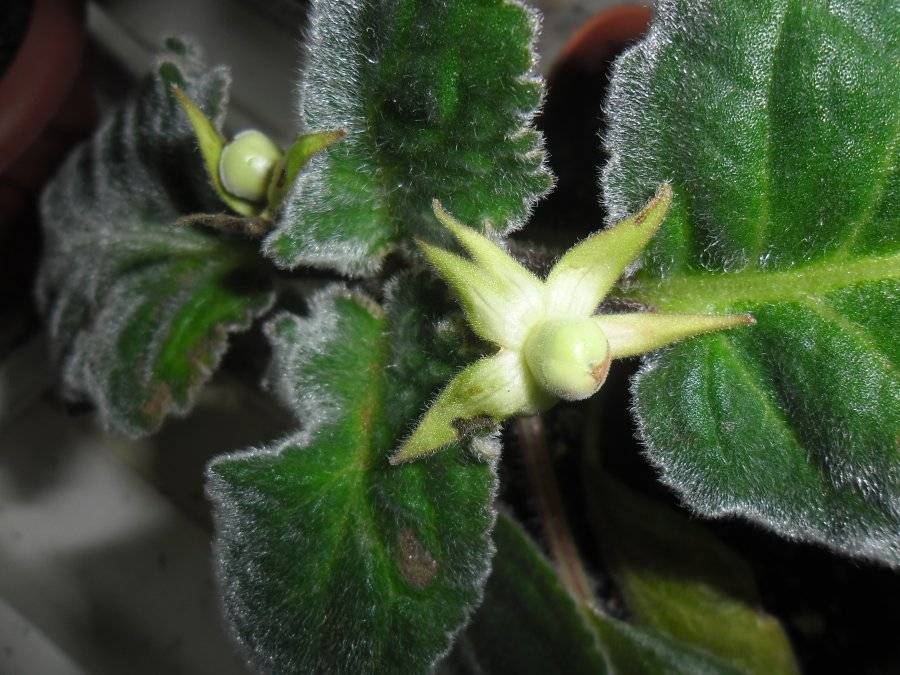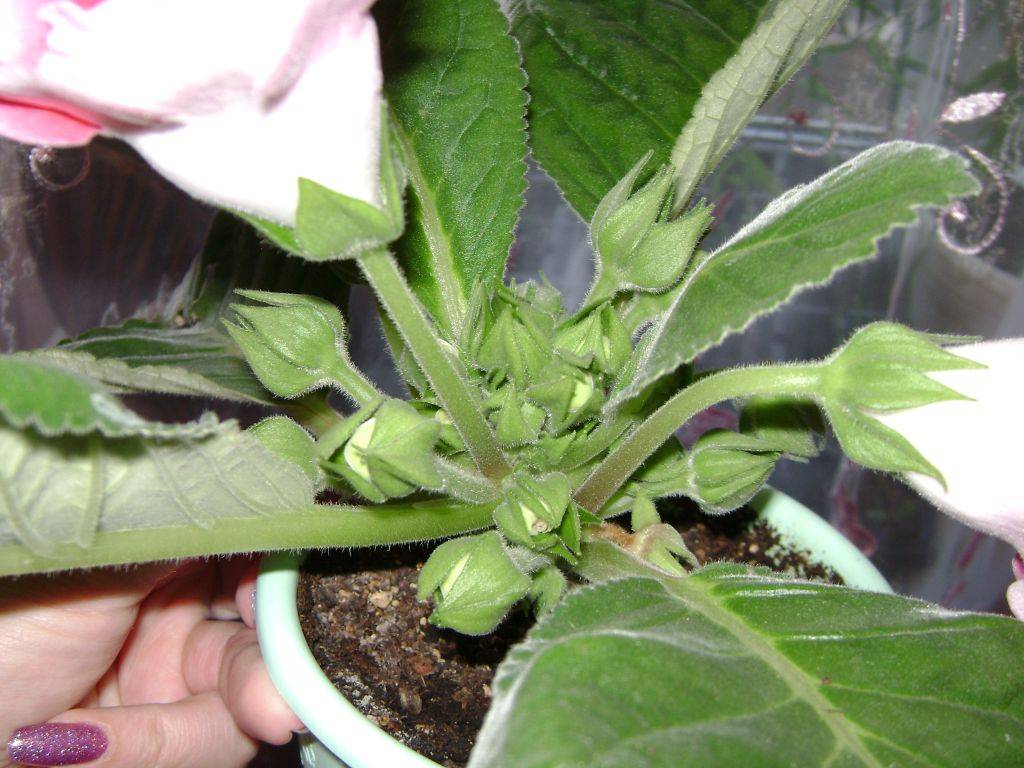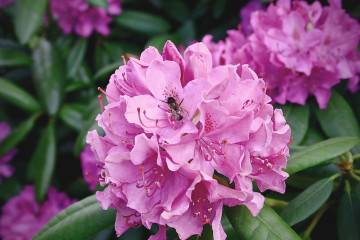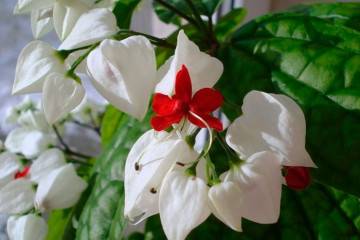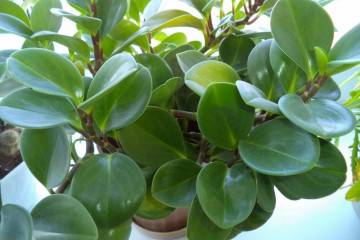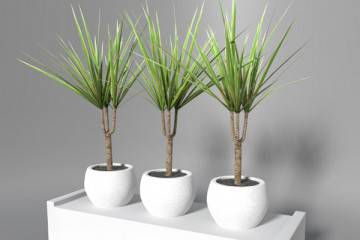Why gloxinia does not bloom at home
Content:
It is not easy to grow plants with bright large buds at home, the exception is gloxinia. This flower is unpretentious to care for, but sometimes it can stop blooming, especially after the winter period. There may be several reasons for this problem, they lie in the conditions of detention. To find out why gloxinia does not bloom, you need to take a closer look at your specimen and carefully study its condition.
Why gloxinia does not bloom: the main sources of the problem
Before worrying about the lack of buds in gloxinia, you need to find out about the period and frequency of its flowering. It pleases the eye with flowers from April to August in two stages with a break in early July. To do this, you need to cut off the remains of the buds at the end of the first stage, so that it blooms again.
If buds did not appear in March, it's time to be puzzled why gloxinia does not bloom at home. Among the common reasons why the buds of gloxinia do not open:
- flower old age or damage during transplantation;
- the soil or fertilizer is contaminated;
- irregular watering or its excess;
- the flower was in the shade without light for a long time, it was not taken out into a sunny place;
- arid microclimate with high air temperatures, being near heating radiators;
- tuber disease. It will have to be pulled out of the ground and inspected for damage;
- the use of inappropriate fertilizers or violation of the terms of their use;
- the appearance of insect pests, provoked by high humidity and the presence of a number of diseased flowers.
If a gloxinia has a damaged tuber, it will spend all its energy on the growth of the stem and foliage, there will be no energy left for flowering.
Why do gloxinia buds dry without blooming and fall off
Most often, the problem of why gloxinia buds dry without blooming lies in improper care. After all, if they appeared, it means that an obstacle to their further development appeared later. For example, there is a lack of nutrients, so it is imperative to feed the flowers in the summer. The buds usually appear at the end of March, and if in winter gloxinia was forgotten somewhere in the shade, a beautiful hat of flowers is out of the question. During hibernation, it cannot be left without regular watering and sunlight, as it must gain strength.
You can reanimate flowering according to the following scheme of actions:
- Raise the humidity in the room (for example, turn on a humidifier).
- Ventilate the room, avoiding drafts.
- Place the flower on the eastern windowsill.
- Fertilize with phosphorus-potassium dressing.
- After watering, the soil should be loose and slightly damp.
- Put in another pot.
Dry soil, pests, stale air in the room and low humidity can also be the reasons. Among fertilizers, preference should be given to phosphorus-potassium without nitrogen.It is the gradual correction of these factors that is the answer to the experiences of flower growers, what to do if the buds of gloxinia dry up.
Why buds turn gray and soft
If the flowering is plentiful, there may not be enough nutrients to open the buds. It is important to remember that gloxinia itself will not bloom luxuriantly; top dressing is needed. Also, pests can be involved in softening the buds - spider mites or thrips. From them, you need to wash the plant with soapy water, removing the damaged areas. Low humidity and unstable lighting are unacceptable.
It is recommended to revive the plant in the following ways:
- daylight hours for gloxinia should be at least 12 hours;
- as soon as the buds appear, a mineral fertilizer complex with a high content of phosphorus and potassium is needed;
- if watering occurs through the pallet, it is better to use two copies. In one to collect gravel, in the other - expanded clay;
- if the foliage of gloxinia stretches up, it lacks sunlight;
- if it is impossible to move the flower from a place with an excess of light, you can cover it with gauze or tulle.
To prevent gloxinia from drying out, you can put a container of water next to it. If the plant has little foliage, it is necessary to strengthen the feeding with nitrogen fertilizers. This will not promote gloxinia blooming, but may be beneficial for green mass growth.
Why do the buds turn black and rot
The high nitrogen content in the soil and excessive moisture are the main answers to the question of why gloxinia buds turn black. If you water the flower too often, rot will appear on the tubers, after which it will move to the aerial part. Therefore, fertilizers for flowering houseplants should always have a low nitrogen content.
It is also easy to explain why gloxinia withers even with the correct application of fertilizers. The answer is simple - it reacts poorly to cold snap and drafts, it is necessary to protect it from temperature changes. Its indicators should not fall below 18-20 ° C on the windowsill and below 12 ° C in winter if the tubers are stored in a dark place.
If the buds turn black before blossoming, you need to act quickly:
- Treat the tuber with epin. It has an anti-stress effect on plants.
- Make the air more humid, the gloxinia should not dry out.
- Remove the plant from direct sunlight during the day.
- If the soil is old, replace it with new soil.
- Adjust watering, do not water until the topsoil begins to dry out.
You can spray indoor gloxinia with plain warm water, but no more than 2 times a week. In this case, moisture should not get on the buds. Excessive carrying out of the procedure will lead to rotting of the leaves and buds.
There are several ways to solve the problem of decay before blooming:
- limit watering until the topsoil is completely dry;
- water only through the pallet, do not spray. Change the water in the pallet;
- if the soil is too acidic (due to nitrogen), transplant gloxinia with a complete soil replacement;
- if these measures did not help, remove and inspect the tuber: cut off brown spots, lubricate the cut with activated carbon powder.
If rot has been found on tubers or foliage, the damaged areas should be carefully removed and the plant should be fertilized with suitable products. There is no need to wait for the blackened bud to dry on its own, you need to cut it yourself.
Why does gloxinia have empty buds
The main advantage of Gloxinia is its charming flowering, which begins in June and lasts until August. That is why the plant is bought during this period in order to appreciate its beauty.The more beautiful the flower is, the more disappointed the grower will be if the buds are empty. If it bloomed when buying, and after that there was such a problem, the reason why the gloxinia buds do not bloom lies in improper care.
You can solve the problem as follows:
- Cut off the peduncle of an empty bud, otherwise a new one will not appear.
- Fertilize the plant according to plan, wait for a new bud to appear.
- After opening a new flower, spray gloxinia with epin according to the instructions.
The plant should only be cut off after it has faded. Also, barren flowers can be the result of too dry air, pest attacks. They suck the juices from the leaves and buds, thereby preventing them from opening.
How to make gloxinia bloom again
After the gloxinia fades, the aerial part dies off, only the tuber remains. It is important to properly prepare the plant for winter, two options are acceptable:
- dry tuber (previously cleaned from rot) place in a pot with soil or river sand. Remove to a cool place and moisturize twice a month. Avoid hypothermia;
- put the tuber in a bag with soil and vermiculite in equal proportions, store in the vegetable compartment of the refrigerator.
In February, transplant the tuber into a larger pot. If in April a problem arises as to why the gloxinia buds did not open, the wintering was carried out incorrectly.
After the plant has blossomed and bloomed at the end of June, you can prepare it for the re-emergence of the peduncle. To do this, you need to follow a simple procedure:
- Trim the foliage, leaving 2-4 large lower leaves.
- Leave a couple of the largest stepchildren in the axils of the leaves.
- Feed twice during the period when stepsons appear, then fertilize once a month with agents for flowering plants.
Blooming gloxinia is a real decoration of the windowsill, harmoniously combining with other representatives of the home flora. With improper care, problems with the buds begin, which are successfully solved through careful correction of errors. After recovery, the flower will delight with double lush flowering.

